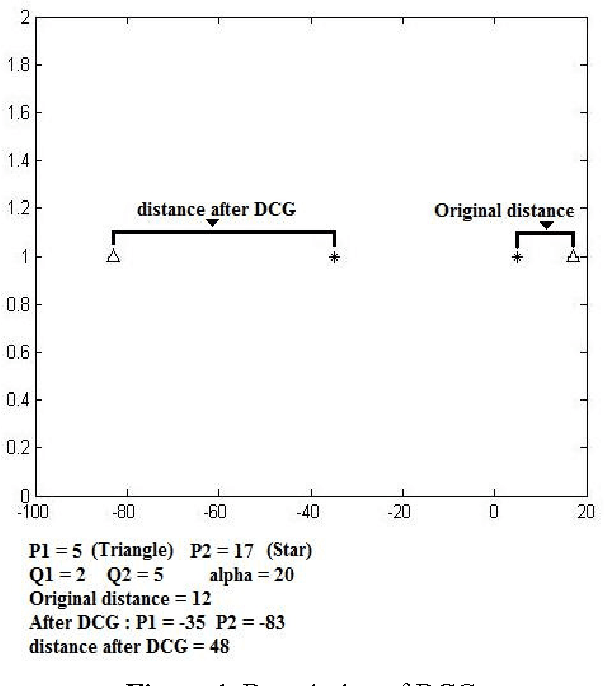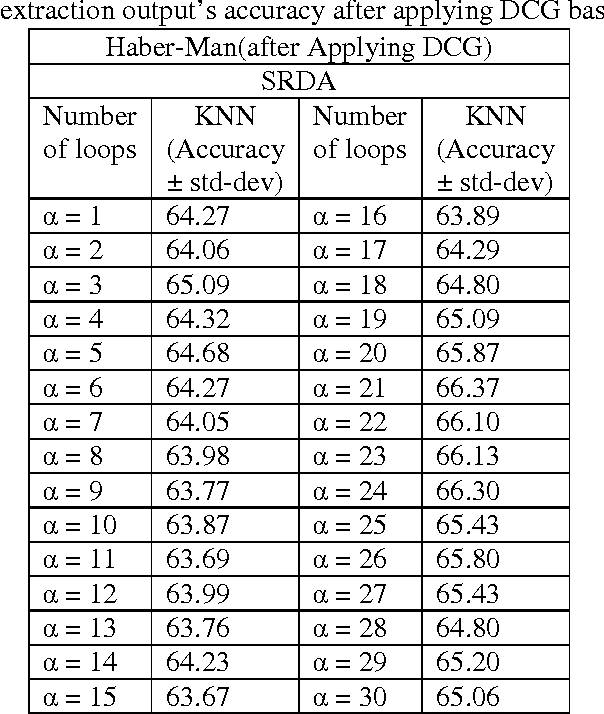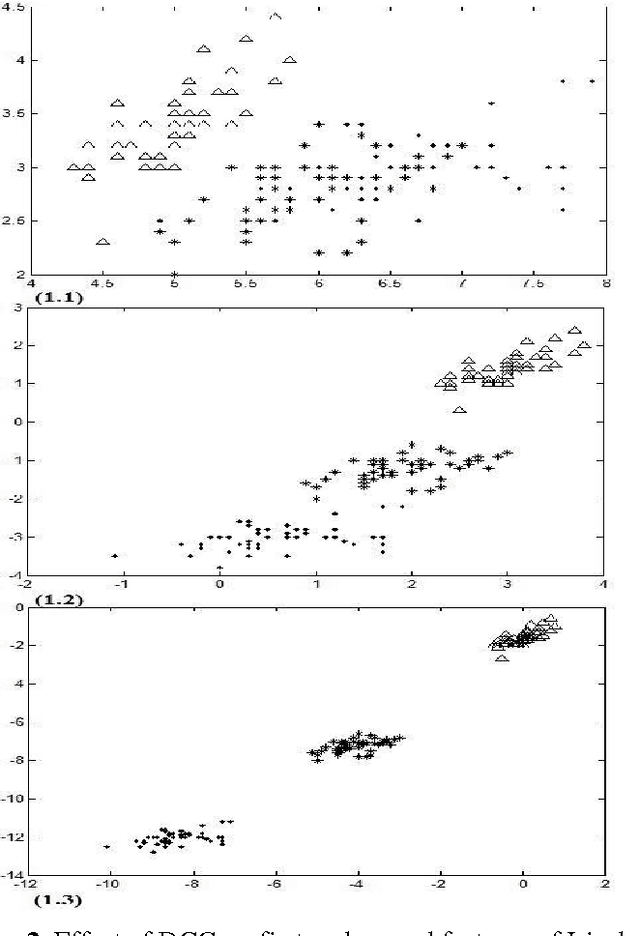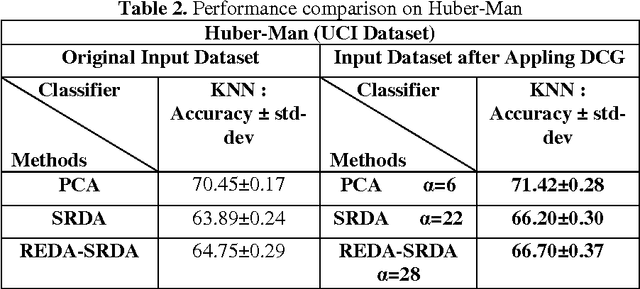Shervan Fekri Ershad
Dispelling Classes Gradually to Improve Quality of Feature Reduction Approaches
Jun 07, 2012



Abstract:Feature reduction is an important concept which is used for reducing dimensions to decrease the computation complexity and time of classification. Since now many approaches have been proposed for solving this problem, but almost all of them just presented a fix output for each input dataset that some of them aren't satisfied cases for classification. In this we proposed an approach as processing input dataset to increase accuracy rate of each feature extraction methods. First of all, a new concept called dispelling classes gradually (DCG) is proposed to increase separability of classes based on their labels. Next, this method is used to process input dataset of the feature reduction approaches to decrease the misclassification error rate of their outputs more than when output is achieved without any processing. In addition our method has a good quality to collate with noise based on adapting dataset with feature reduction approaches. In the result part, two conditions (With process and without that) are compared to support our idea by using some of UCI datasets.
Texture Classification Approach Based on Combination of Edge & Co-occurrence and Local Binary Pattern
Mar 21, 2012

Abstract:Texture classification is one of the problems which has been paid much attention on by computer scientists since late 90s. If texture classification is done correctly and accurately, it can be used in many cases such as Pattern recognition, object tracking, and shape recognition. So far, there have been so many methods offered to solve this problem. Near all these methods have tried to extract and define features to separate different labels of textures really well. This article has offered an approach which has an overall process on the images of textures based on Local binary pattern and Gray Level Co-occurrence matrix and then by edge detection, and finally, extracting the statistical features from the images would classify them. Although, this approach is a general one and is could be used in different applications, the method has been tested on the stone texture and the results have been compared with some of the previous approaches to prove the quality of proposed approach.
* 4 pages, 6 figures, 1 tables
Color Texture Classification Approach Based on Combination of Primitive Pattern Units and Statistical Features
Sep 06, 2011



Abstract:Texture classification became one of the problems which has been paid much attention on by image processing scientists since late 80s. Consequently, since now many different methods have been proposed to solve this problem. In most of these methods the researchers attempted to describe and discriminate textures based on linear and non-linear patterns. The linear and non-linear patterns on any window are based on formation of Grain Components in a particular order. Grain component is a primitive unit of morphology that most meaningful information often appears in the form of occurrence of that. The approach which is proposed in this paper could analyze the texture based on its grain components and then by making grain components histogram and extracting statistical features from that would classify the textures. Finally, to increase the accuracy of classification, proposed approach is expanded to color images to utilize the ability of approach in analyzing each RGB channels, individually. Although, this approach is a general one and it could be used in different applications, the method has been tested on the stone texture and the results can prove the quality of approach.
 Add to Chrome
Add to Chrome Add to Firefox
Add to Firefox Add to Edge
Add to Edge